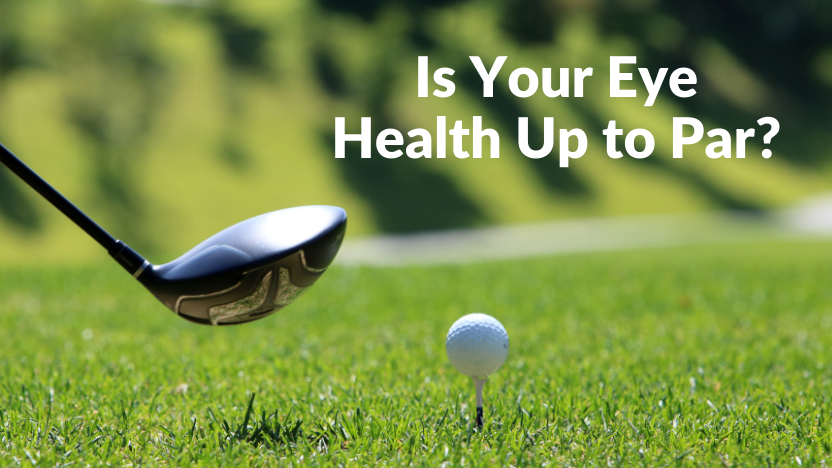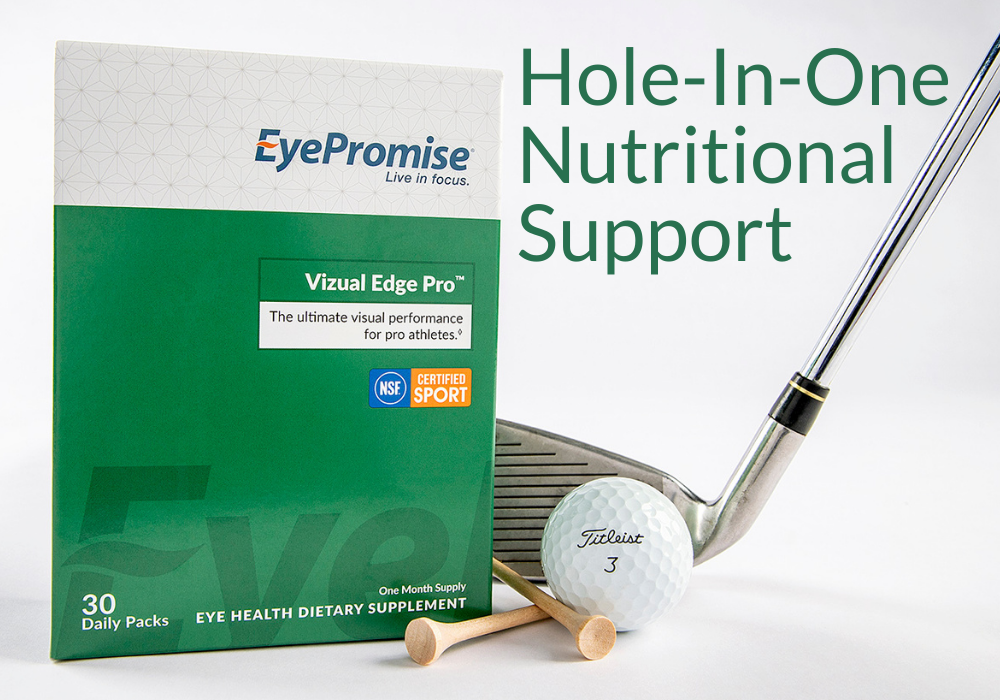Golf, Nutrition, and Vision: Up to Par
Posted by EyePromise on Dec 8th 2021
Nutrition is an important aspect for performance. However, few fully understand its impact on vision specifically for performance. Furthermore, even fewer know how visual performance can heavily impact golf performance. Our expert, Dr. Graham Erickson, shared his thoughts on this topic.
Visual Performance for Golf
First, Dr. Erickson reviewed which specific visual performance measures are most important for a golfer.
Contrast Sensitivity
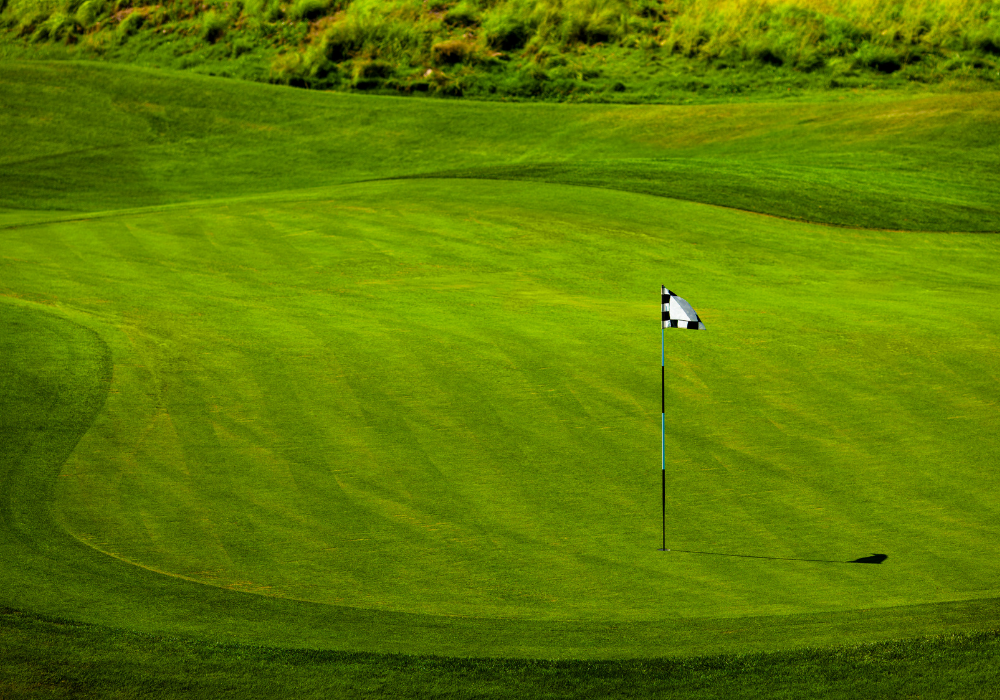
As you may have read in a previous blog, contrast sensitivity is your eyes’ ability to identify subtle differences in your visual field. An example of high contrast is black text on a white background, and an example of low contrast is a black cat crossing a dark street. Contrast is important for golfing in a few different ways, the first being putting.
When putting, a golfer needs to be able to read the dips and slopes of a green to determine the best putt path. These dips and slopes are characterized by slight differences in color, and contrast sensitivity can help golfers recognize these variations. Better identifying the variations helps them better identify the best path to sink the putt.
The second aspect of golf that contrast is important for is following long drives. The small white ball can easily be lost against a gray or light blue sky, so having great contrast sensitivity is necessary to follow your drive and know where you landed on the fairway. Once the ball lands (hopefully) on the fairway, the contrast increases, and the ball is easier to find. But how will you know where to look if you can’t track it?
Distance Demands
Golf requires participants to have both nearsighted and farsighted vision. Again, following a drive down the fairway requires good distance vision, as the ball flies an average of 200 yards in a single drive according to Golf Digest. However, contrast sensitivity and farsightedness aren’t the only visual performance measures that impact following a drive.
Glare Recovery
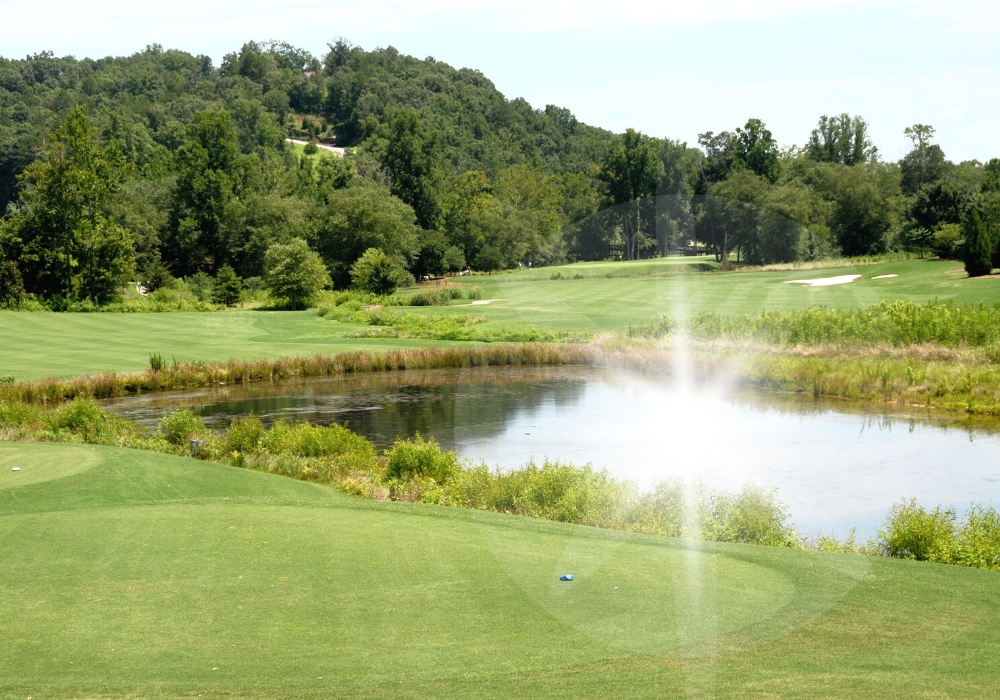
Glare recovery, your eyes’ ability to “see normally” after being exposed to a bright light, can impact a golfer’s ability to follow their ball. If the ball crosses paths with the sun, that intense, bright light can bleach your photoreceptors (the delicate cells in the retina responsible for vision). This can cause temporary blindness and leave that annoying bright spot in your vision for a few minutes. That recovery time can be the difference between finding your ball on the fairways and a guessing game.
Directional Localization
In his book Sports Vision: Vision Care for the Enhancement of Sports Performance, Dr. Erickson defines directional localization as, “the ability to determine the exact direction of visual information (i.e., target, object, opponent, teammate, terrain).”
Putting accuracy relies heavily on this particular skill. Along with contrast sensitivity, directional localization helps a golfer to determine the divots and angles of a green to determine the best putting direction. Accomplished golfers take the time to assess a putt from various angles to “see the line” clearly. Eight-time Hall-of-Fame golfer Colin Montgomerie said, “If you can see the line [in the putt] and believe it, it’s amazing how easy the game becomes.”
Beyond putting, directional localization helps golfers with the drive angle, too. They need to be able to see where the green is in relation to the tee, and from there, they can determine the direction and spin of the drive.
Spatial Localization & Depth Discrimination
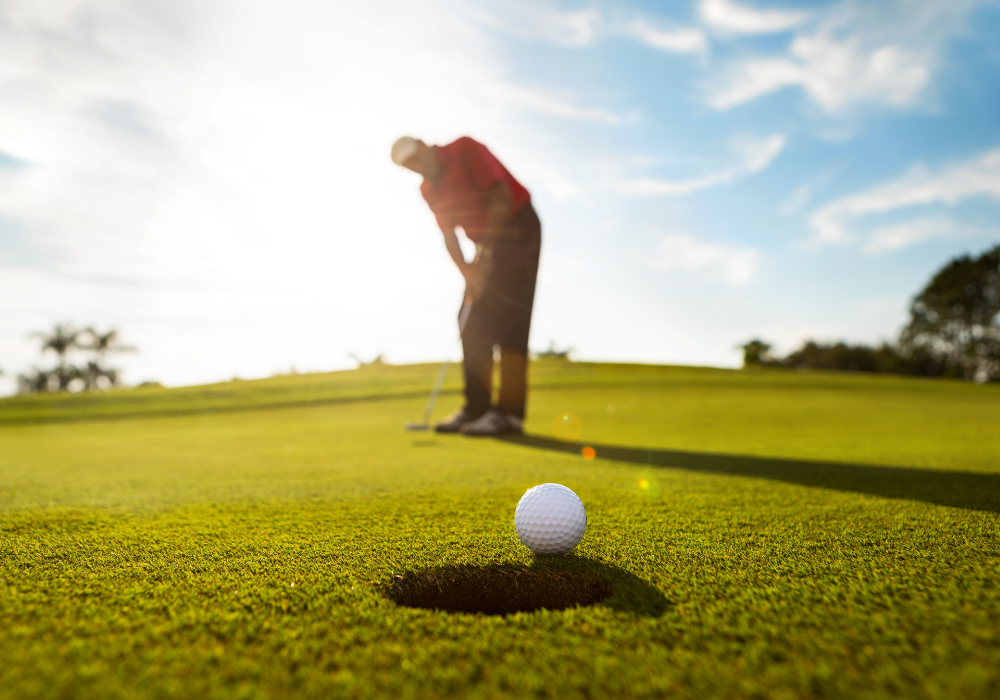
Judging distance also comes into play with localization. Along with the direction, a golfer needs to determine the power behind the putt that’s going to give them the trajectory they're envisioning. Having good depth perception and spatial recognition can help them deduce the accurate stroke strength to put behind the putt. This also plays a major role in judging drives and pitches. Some drives require more finesse than just an all-out power hit, and depth discrimination and spatial localization can help golfers assess this more accurately.
Peripheral Vision
Of course, central vision is important for golf, but what about peripheral vision? Have you heard the phrase “eye on the prize?” This applies for golfers in a major way. While they need to focus on the ball at their feet, they need to keep the green/hole in their visual field. Peripheral vision helps keep their eye on the line in the putt while concentrating on the stroke in front of them.
Nutrition & Vision for Golfers
It’s common to protect your skin with sunscreen, and many golfers choose to wear sunglasses to protect their eyes on the course. But did you know that your eyes have internal sunglasses that can be enhanced through nutrition? There’s a protective pigment in the center of your retina called macular pigment, and it acts as polarized sunglasses within the eye, enhancing several aspects of visual performance like contrast, clarity, and light sensitivity to name a few.

Your macular pigment a made up of 2 dietary antioxidants: zeaxanthin and lutein. These powerful nutrients are what give your macular pigment its protective quality and ingesting healthy amounts of these two ingredients can improve your visual performance. Found in brightly colored fruits and vegetables and leafy greens, zeaxanthin and lutein are notoriously scarce in the average diet.
Supplementation
Many eye care professionals recommend supplementation to bridge the inherent dietary gap. Dr. Erickson recommends EyePromise® eye vitamins to his patients.
“EyePromise vitamins deliver the optimal balance of nutrients to both support and enhance visual performance measures. The science backs it up. Daily supplementation with EyePromise can lead to improved contrast sensitivity and visual acuity, less glare and light sensitivity, and overall improved vision.”
More than clinical research, EyePromise has joined forces with 5 professional golfers to help spread the importance of nutrition and vision for golf. Each of them takes EyePromise Vizual Edge Pro™, and they’ve noticed incredible differences in their vision and performance.
Padraig Harrington
Colin Montgomerie
Dylan Wu
“One year ago, I decided to give EyePromise eye vitamins a try. Since then, I have noticed improvement in my ability to read the greens and less sensitivity in sunlight. This gives me confidence which, in turn, has helped me improve my game.”
Jared Wolfe
“I’ve been taking EyePromise Vizual Edge Pro™ since November of 2020 and have really noticed that I am picking up on so many more of the little details on the golf course. I am seeing my targets from a distance clearer, but probably more importantly I am picking up the subtle contours and the grain on the greens much better.”
Lee Hodges
“I have worn contacts most of my life and am grateful to have found EyePromise. I have always battled dryness and irritation due to long days outside on the golf course, and EyePromise Vizual Edge Pro has reduced [my] discomfort. Eye health is crucial to my ultimate success on the golf course!”
There are many different aspects that impact the sport of golf, and many of them rely on visual performance. Step up your game by upgrading your eyes with EyePromise. Learn more about the vitamin the pros are taking: Vizual Edge Pro.

